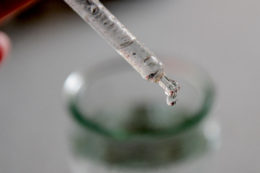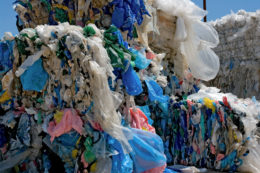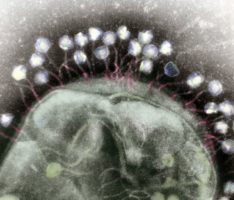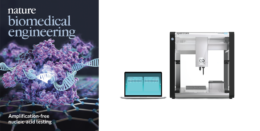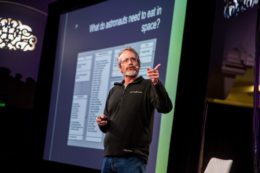Posts Tagged ‘research’
How water helps the substrate into the enzyme
An international research team including Professor Teresa Head-Gordon have investigated why cages can increase the catalytic activity of enclosed molecules. Using terahertz spectroscopy and complex computer simulations, they showed that water encapsulated in a tiny cage has special properties that are structurally and dynamically distinct from any known phase of water.
Read MoreUpcycling: Turning plastic bags into adhesives
Professor Phil Messersmith’s lab has collaborated on a new chemical process that converts polyethylene plastic into a strong and valuable adhesive, and could make plastic bag recycling economically worthwhile.
Read MoreCataloging Nature’s Hidden Arsenal: Viruses that Infect Bacteria
Adam Arkin is one of the leaders of a new approach for studying which bacterial receptors phages exploit to infect cells, and what cellular mechanisms the bacteria use to respond to a phage infection. These microscopic battles have implications for medicine development, agricultural research, and climate science.
Read MoreNew CRISPR-based COVID-19 test uses smartphone cameras to spot virus RNA
Fletcher Lab, in collaboration with the Gladstone Institutes and Doudna Lab, have developed a new CRISPR-based COVID-19 diagnostic test that, with the help of a smartphone camera, can provide a positive or negative result in 15 to 30 minutes. This test also gives an estimate of viral load, or the number of virus particles in a sample, which can help doctors monitor the progression of a COVID-19 infection and estimate how contagious a patient might be.
Read MoreCRISPR-Chip: from the Cover of Nature BME in June 2019 to a product in June 2020
Former BioE postdoc Kiana Aran, now professor at KGI, explains the one-year journey of the CRISPR-Chip from academic publication in June 2019 to a flourishing product in 2020. Berkeley bioengineers, including professors Niren Murthy and Irina Conboy, co-authored the original research.
Read MoreCan microbes save us from global warming?
Adam Arkin explains the latest research in synthetic and systems biology on the Science is Fun! podcast.
Read MoreUC Berkeley accelerates bio-preservation research as part of $26M NSF center
Professor Kevin Healy will lead the UC Berkeley efforts in a new multi-university research center funded by the National Science Foundation at the University of Minnesota, Massachusetts General Hospital, UC Berkeley and UC Riverside. The Engineering Research Center for Advanced Technologies for the Preservation of Biological Systems (ATP-Bio) aims to advance methods for storing and preserving biological cells and tissues, work that could benefit biomedical research and dramatically expand organ transplant networks.
Read MoreHow is the coronavirus spreading around the Bay Area?
Professor Liana Lareau is using genome sequencing to study how COVID-19 is spreading around the Bay Area.
Read MorePatrick Hsu’s COVID-19 antibody test review featured on 60 Minutes
Early in March, a team of 50 scientists in California did what the FDA had not: they started testing the antibody tests.
Read More

